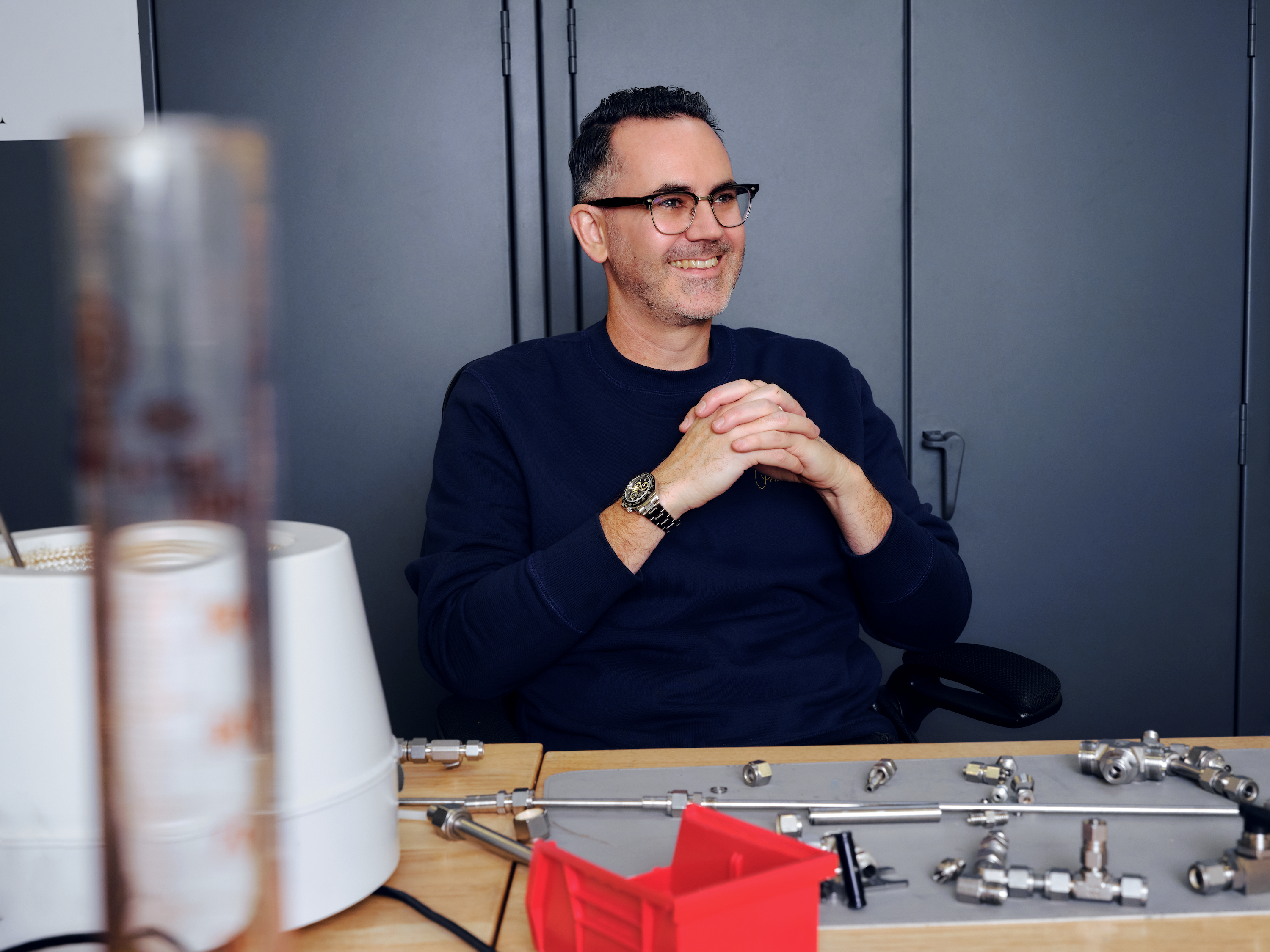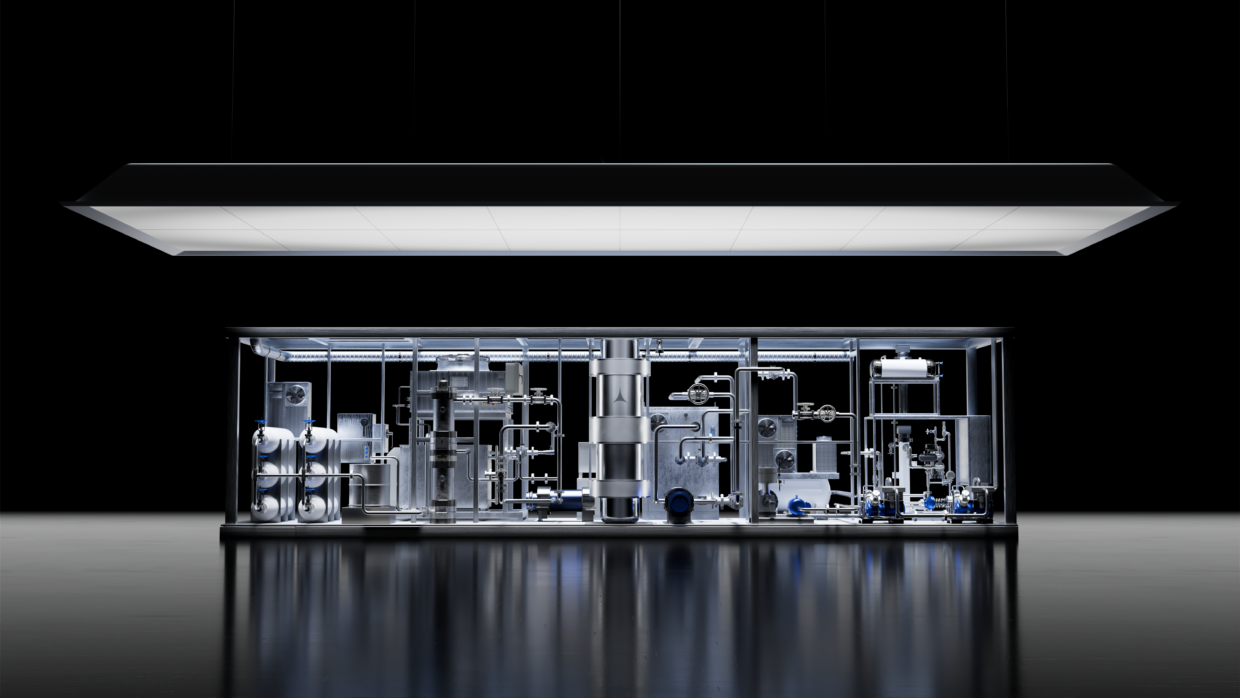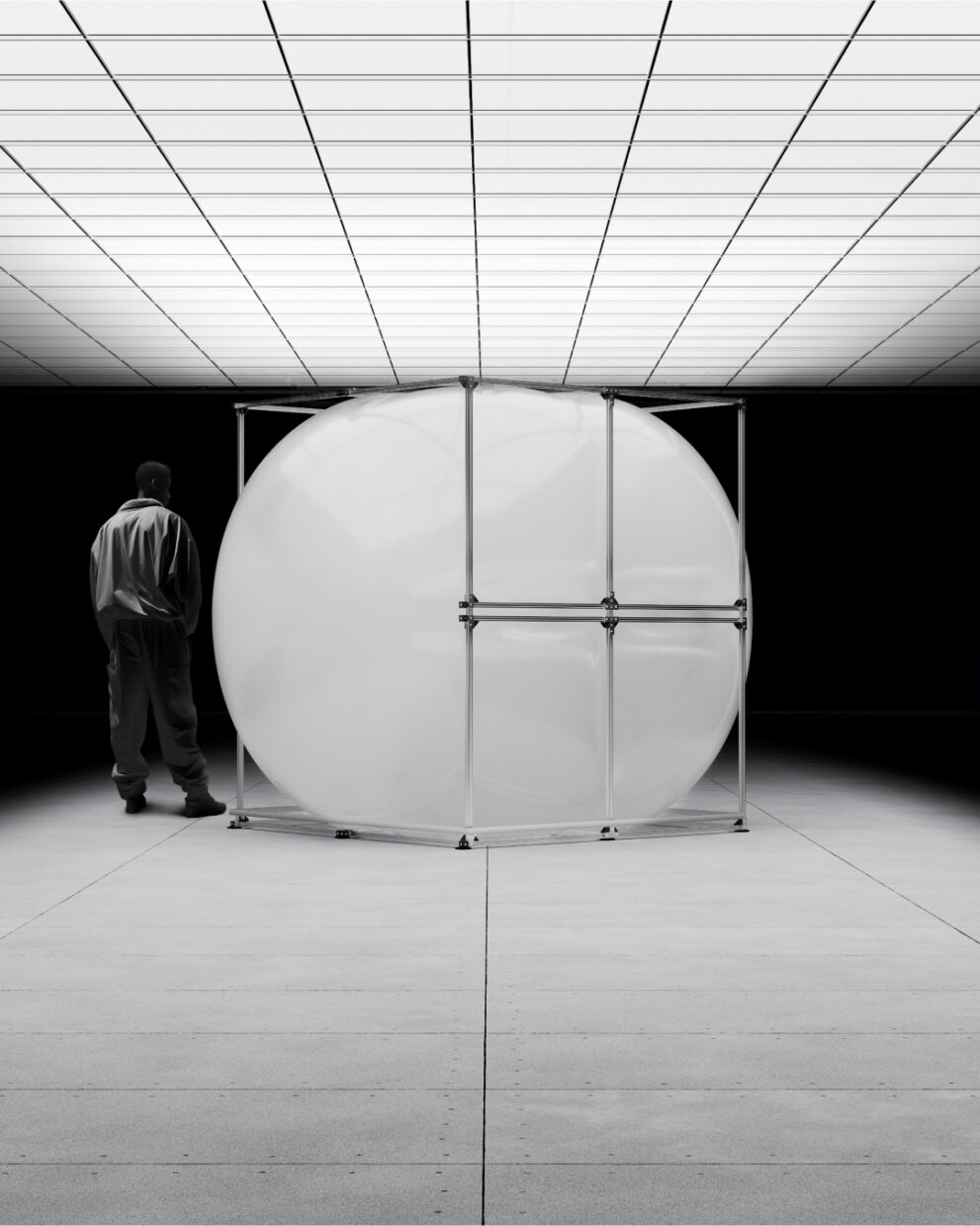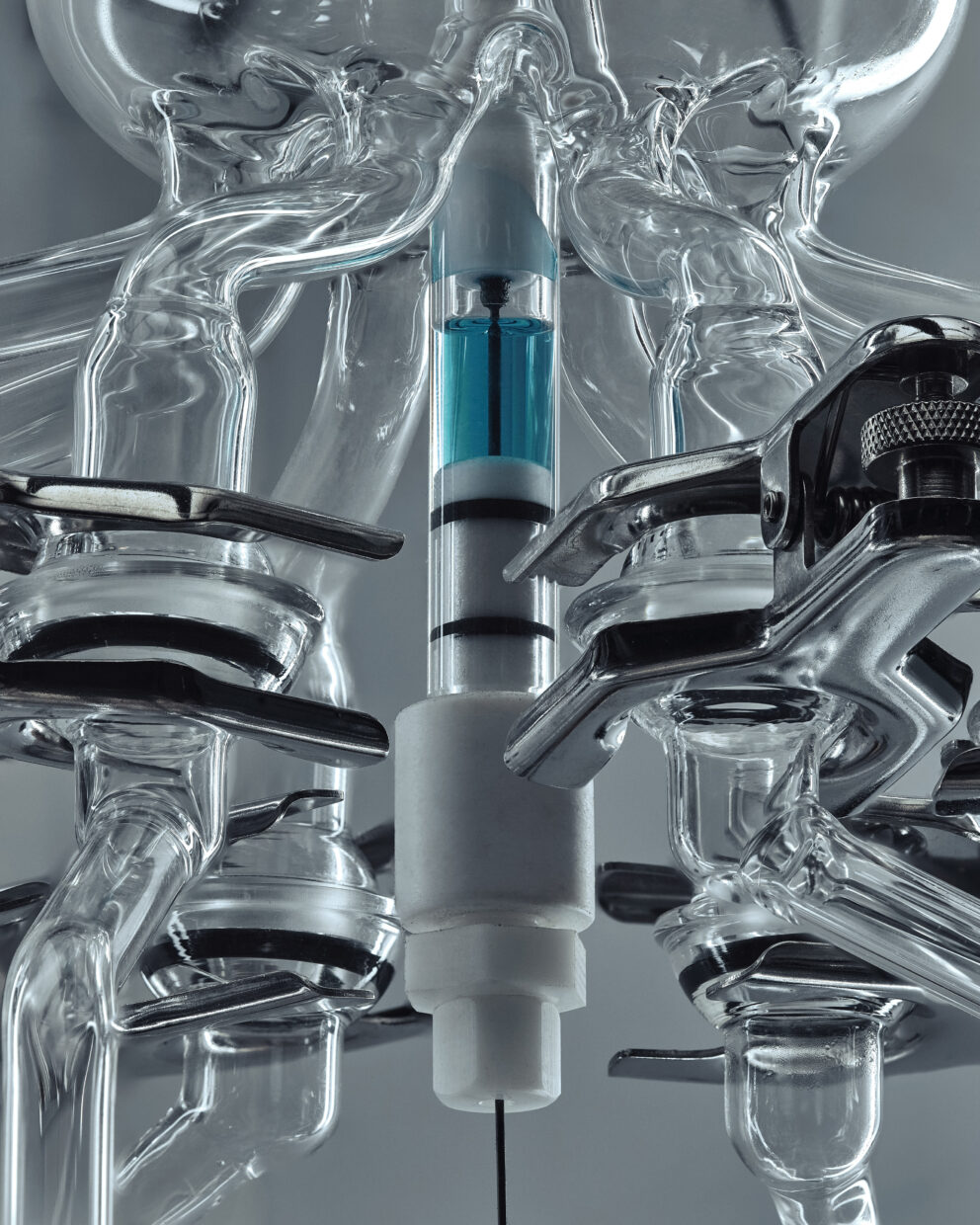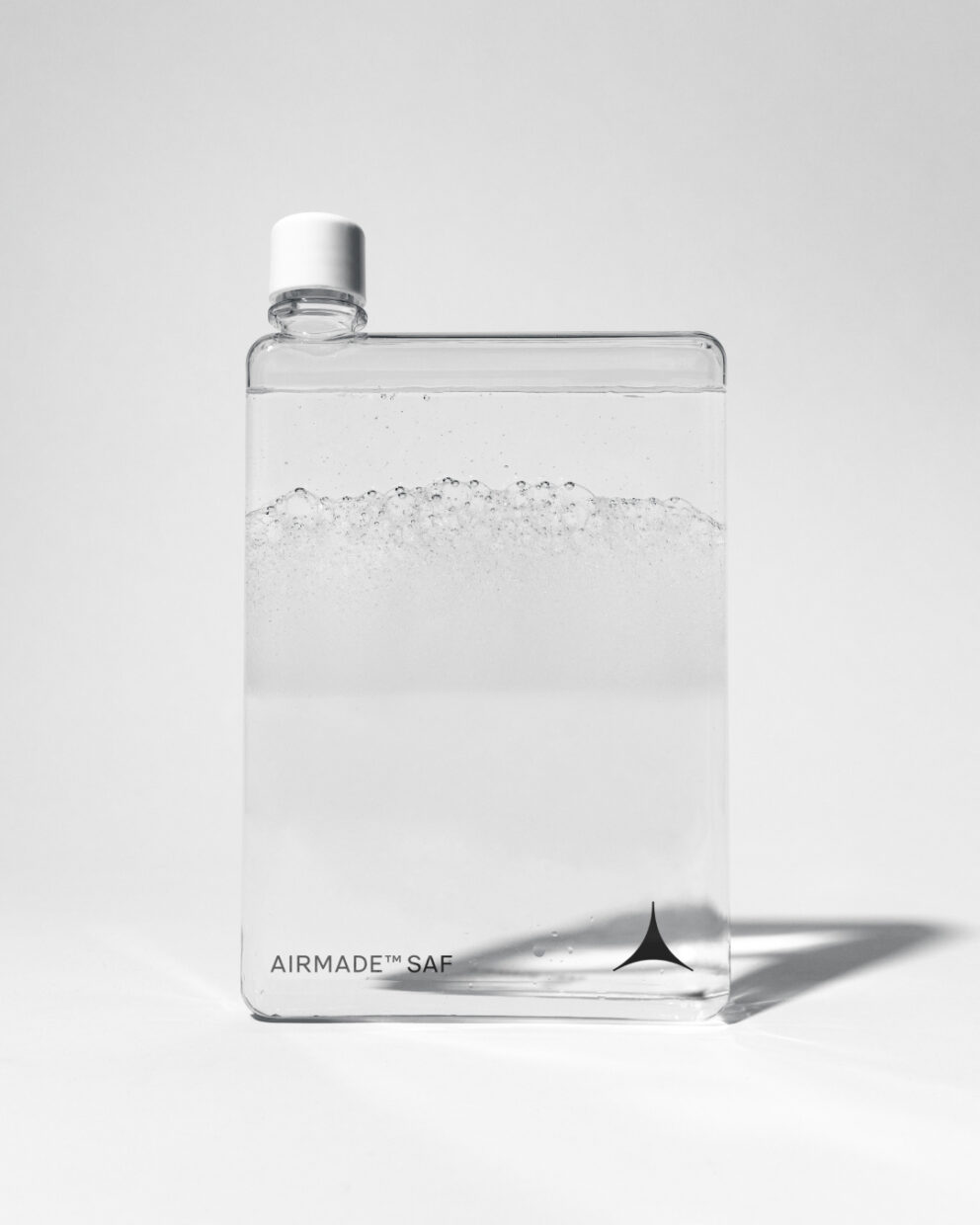How do you turn the largest greenhouse gas into a sustainable resource—and more importantly, one that many industries use? The answer, perhaps, is by attracting luxury audiences. That hunch is the driving force behind AIR COMPANY’s sleek design and marketing strategy.
AIR COMPANY is a climate technology brand with a mission of turning CO2 into carbon-negative alcohols and fuels. These materials are then used to make sustainable products, from their AIRMADE™ Sustainable Aviation Fuel to their infamous AIR Eau de Parfum, the first fragrance made from CO2.
The company’s secondary mission, however, is to challenge assumptions about how a green brand should look and function. Leading that charge is Andrew McKechnie, a Webby Judge and the newly-appointed Head of Marketing at AIR COMPANY. We spoke with him about his work to usher in a new era for sustainable brands, where GenAI fits into this mission, and what’s on his rubric as juror for The Webby Awards.
For those who don’t know, tell us a little about your background.
I lead Marketing at AIR COMPANY, one of the world’s leading climate technology companies that is transforming CO2 into a suite of sustainable and innovative products to help decarbonize the planet. I have always focused my energy on building purpose and culture into brands, most recently as the Chief Creative Officer at Verizon, and prior to that the Global Head of Design at Apple marcom.

The AIRMADE factory.
What particular expertise are you bringing to the Academy?
For the past two decades, I’ve been immersed in various aspects of technology, from advancements in mobile and networking technology to the emergence of advanced creative tools such as Web3 and GenAI. Underpinning this experience is my pursuit to humanize and simplify technology through powerful storytelling and creativity.
What drew you to this role at AIR COMPANY? What stood out about the mission?
Ultimately, I was drawn to the fact that AIR COMPANY is at the intersection of purpose and technology. It leverages technology in ways that can solve some of our toughest challenges. In this instance, it’s rooted in trying to eliminate CO2 emissions. That is rare when you think about a technology brand—the technology itself is a solution to one of our biggest problems.
My background has predominantly been in tech for many years. I’ve always believed that technology can be an enabler. It should improve people’s lives. It should be relevant. It should, ultimately, have a more positive impact on society. At our company, the core of the actual technology and the AIRMADE™ system is trying to solve that issue.
“ “It’s pretty challenging, from a consumer standpoint, to engage in a meaningful way around carbon reductions. We’re giving them a way to engage with a product that they are more naturally attracted to, either because of the design or the branding.” ”
AIR COMPANY’s marketing is, noticeably, very sleek. It feels luxe, and made me think of Coperni’s upcoming Air Swipe bag. What made you want to go in this direction for your products?
It’s a great observation because that means it’s working. Different brands and products that typically fall within the sustainability category have become almost generic, and have a homogenous approach to what sustainability should represent. Impossible Foods is a good example [of shifting away from that]. If you look at their relaunch recently, they moved from green packaging to red packaging to lean into saying “we’re a meats company, but plant-based meats.” That’s a shift away from traditional green marketing.
What we’ve tried to do is tackle two issues. One is that people are going to continue to consume.
We want to be seen as a company that allows people who are into high design, high fashion, and a luxury lifestyle to engage in a conversation that they may not always think about. We’ve used our products as a vessel to provoke those conversations around climate, sustainability, and around our technology, the AIRMADE™ system. It’s pretty challenging, from a consumer standpoint, to engage in a meaningful way around carbon reductions. We’re giving them a way to engage with a product that they are more naturally attracted to, either because of the design or the branding. That allows us to bring people in and show consumers, and enterprise companies, what that can mean for a future around sustainability. We’re demonstrating that these products can be a viable solution.
Design is a way for us to not only engage different communities in our mission, but also to demonstrate to industries making these types of products that they can also partner with a company like ours, and potentially license that technology. It works for us on two different fronts, both from a consumer standpoint and also from a B2B standpoint.
It makes sense why you launched with a perfume and vodka. Going back to the perfume – what does it smell like?
Delicious. Not in terms of you wanting to eat it.
It is inspired by the elements and qualities of being outside. It’s a very floral-forward fragrance.
The AIRMADE™ Sustainable Aviation Fuel feels like the holy grail of your products. How do you see this scaling?
At the foundational level, what we’re trying to create is a technology platform that allows us to address different companies of varying sizes, and also different industries. Rather than trying to find a single solution for a particular customer, application or product, the AIRMADE™ system is modular. It’s also mobile, so it allows us to go to different companies—or different facilities—across the globe and scale depending on what they need.
It’s the same with our Sustainable Aviation Fuel. There is a lot of change happening: policy shifts and advocacy around the aviation industry requiring airlines to now support fuel alternatives. Our technology cuts both fuels and chemicals. The way in which we’re developing the technology can serve the customer where they are, depending on size and scale, and depending on applications and needs.
Back to your marketing…what has also stood out is your “In Good Company” series highlighting change makers addressing climate change. What do you hope the series shows?
Spotlighting other voices in the climate space, and other areas of sustainability, is really important. You could argue that sustainability has become a norm at this point. There are also issues with that, in terms of greenwashing and greenhushing. We need as many people trying to solve the climate issues we’re facing in a positive way—and we need more proof of that. What people are hearing and sensing is that we’re in trouble. There’s a massive fear factor around climate that, I think, overshadows a lot of solutions that are being worked upon [and people behind them.]
So the series was intended to raise those voices up and make sure we’re spotlighting other solutions. We all need to support each other; there aren’t many competitors, per se. We need different companies, like ourselves, to be pushing forward. That was a really important narrative for us to get out there. Because these are the stories that don’t get as much attention either.
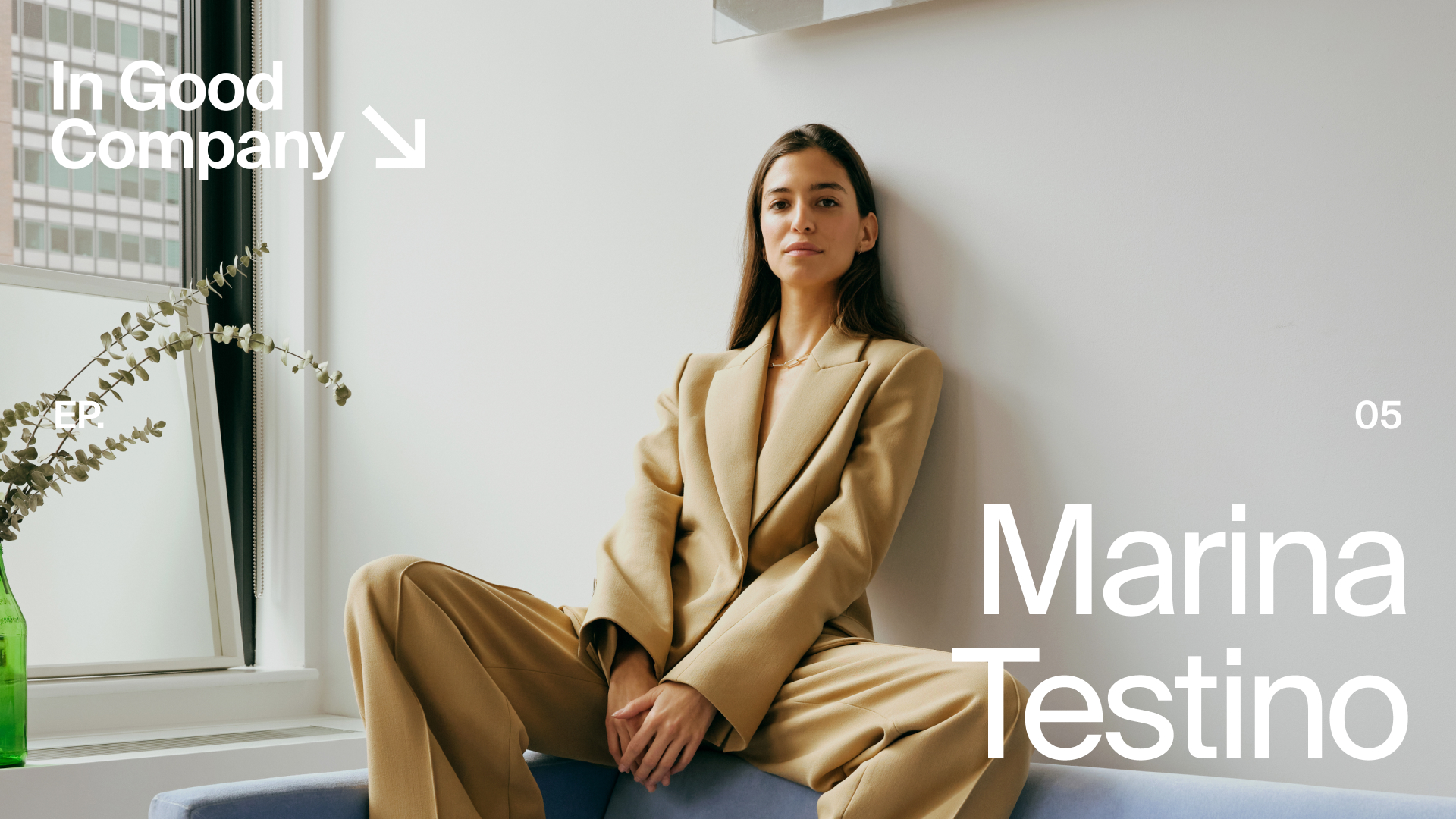
Marina Testino, Sustainability Advocate and Creative Director, featured in the ‘In Good Company’ series. Photo credit: AIR COMPANY
What emerging technology or trend do you think will have the greatest impact on the creative industry?
I think GenAI will have the broadest impact across all aspects of the creative ecosystem. I’m also really interested to see how GenAI will accelerate advances in enhanced content generation and user experiences in AR/VR.
At AIR COMPANY, we’re looking at GenAI as a way to engage audiences with design, and to bring people into conversations they may not be thinking about. To date, GenAI has been a way for us to show the potential of where this technology can go. If you think about the negative aspects of GenAI, people will say the aesthetic is too futuristic. But we are trying to show a future world, of either our products or maybe a future world of packaging. Some of these things are hypothetical like, for example, what if a product could produce its own skin. In a lot of ways, it becomes an R&D testing ground for ourselves to hear what our community thinks.
It’s also been a great resource to provoke conversations around climate design, which pertains to everything from industrial design to creativity.
What’s next for you and AIR COMPANY?
I would say that we’re at a pivotal moment, in terms of the technology moving past what we would consider a demonstration phase. We need to now commercialize that technology, and prove to our customers that it works—and it can work at scale and volume. So the path for us is to demonstrate our products in different ways, and to provide licensing opportunities for companies across different industries.
From a brand standpoint, it’s to continue communicating our technology story and purpose. Also, bringing interesting ideas, applications and partner collaborations is something you’ll see more of, especially as the technology scales.
That will be the story we want to tell.

